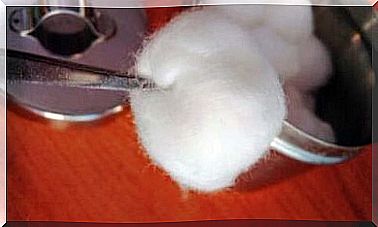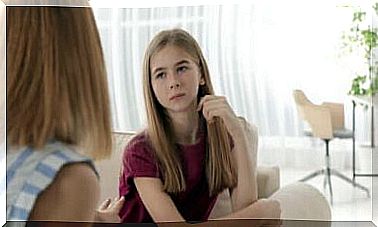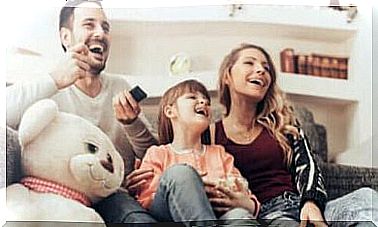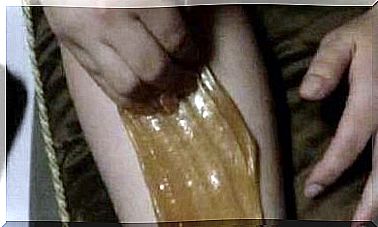Why Do Babies Stare At Things?
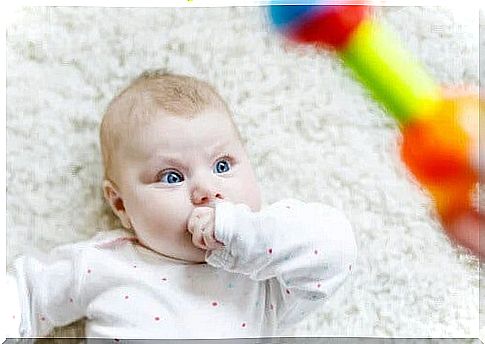
For newborns, the world is new and enters through all the senses. Babies stare at things because they move, because they dance, because they sparkle and change appearance before their eyes. They chase them with their eyes until a new shiny object appears, which, while common to us, is fascinating to them.
A shadow or a light crosses before their searching gaze and that’s where they fix their eyes without blinking. We are going to incorporate all the sensations in a very wide repertoire, so that nothing seems to surprise us anymore. So everything becomes familiar and common. But for babies, the colorful mobile attached to the crib is a real universe.
We say babies are like sponges. And yes, they are absorbing reality and making connections. Numerous sensations are shaping the emotional, bodily, and motor responses with which, since birth, babies interact. The “Practical Guide for Parents” of the Spanish Association of Pediatrics can be useful in this phase of intense learning.
How does a baby’s vision develop?
Babies’ brains have enormous plasticity. It is only recently that the ability of nerve cells to adapt to their surroundings has been understood. When connecting to other neurons, they know and recognize it sensorially, without resorting to words.
Babies are born with an enormous capacity to learn. The maturation of vision goes hand in hand with motor skills and neurological development. For the first three months, babies look for, fix, and follow lights or objects that enter their visual field.
From the third to the fifth month, they can see their own hands, and play with them and the toys around them. From the ninth month to the first year, they touch objects they recognize and play with them. The retina matures between 6 and 11 months of age. From 3 to 6 years, the visual ability matures.
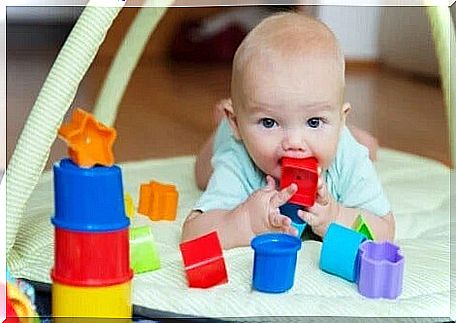
Reasons why babies stare at a person or object
Babies stare at something when they are attracted to movement. The child’s neuronal dynamism is only comparable to the plasticity of the world that is presented before his eyes.
objects move
They are attracted to objects that move before their eyes. That’s why mobiles are among the top recommended accessories for stimulation.
We should try to make the objects we place in front of and near them to glide through the air in a semicircle, but not quickly. The idea is to hold your gaze, contributing to eye motility, which is fundamental for the development of vision.
things shine or light up
Spotlights attract babies’ eyes as well as shadows. The contoured shapes and regular silhouettes receive fixed attention without causing discomfort or irritation.
Babies love details, which they scrutinize with interest as well as feeling with their hands and fingers. A daddy’s beard and mustache arouse a lot of curiosity.
are attracted by the colors
The vivid colors and contrasts of black and white seduce babies’ eyes. But we can’t over-stimulate them because they get exhausted.
They warn us by abruptly changing the direction of our gaze, trying to rest. Soft music in the environment can accompany the synesthesia of colors, textures and shapes.
When objects and faces have harmonious features
Babies are said to stare into pretty faces, but we mustn’t forget that they are ignorant of society’s accepted concept of beauty. Thus, we conclude in this regard that they are attracted by smooth and harmonious shapes, rounded rather than abrupt, serene and full.
Familiar and familiar faces, in which they recognize themselves, make them feel calm, protected and comfortable.
When can a baby’s stare be worrying?
In the theme discussed, the problem is not so much the fixed gaze, but the gaze lost at a point without establishing interaction with caregivers. Although developmental rhythms are different from one child to another, we must be aware of the following signs:
- At two months, the baby does not fix his gaze on the person who is looking at him closely. Some studies have shown this to be an early sign of autism.
- Between the third and fourth month, the baby does not follow the objects that move around him with his eyes and does not smile at people who seek his eye contact.
- At six months, he does not try to grab objects within his reach or shows no affection for his caregivers.
These signs will certainly be accompanied by others that will reflect problems in psychomotor development, language or neurological disorders.
How can I contribute to my baby’s eye development?
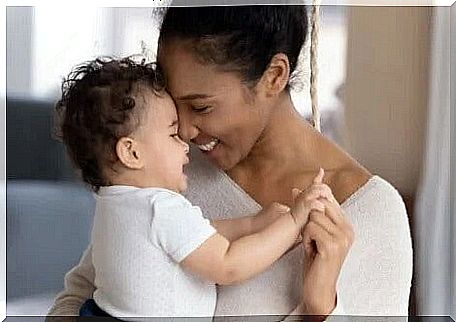
Visual stimulation involves emphasizing what we want our baby to see, feel and memorize. Colors, movements and shapes will participate in the perceptual development and adaptation to the environment.
Babies are beginning to know and, for this, they activate associative mechanisms that allow them to connect objects, sensations or people to a concept. Care, food, protection, affection, rest, comfort, satisfaction.
We must know that a fundamental neurophysiological mechanism in the visual development of babies is the existence of mirror neurons. They are essential in action, understanding and imitation. In fact, just 7 hours after birth, babies are already interested in the mother’s face and will soon imitate the facial expressions of their caregivers.
So when babies stare at what someone is doing in front of their eyes, they experience the sensation as if they were involved in the action themselves.
Another process we cannot ignore is that in a year and a half babies will develop implicit memory. Through this, they register and store information unconsciously. They keep the experience of the behavior, the emotion that their caregivers expressed or provoked in a playful moment or for something in particular.
The thrill of when babies stare into our eyes
When our babies see us, it’s like we’ve been born again. In this miraculous moment, there is a crossing of eyes full of intention and vital information that comes and goes. There is communication.
From that moment on, the caregiver discovers that the baby is already able to show, point and, mainly, name. It then initiates the prodigious constitution of the self and the other, the neuronal essence of the personality.



